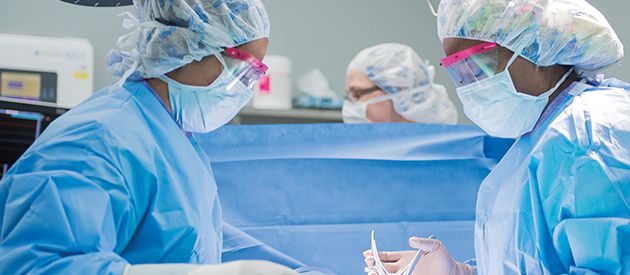If a spine condition causes compression on the spinal nerves, a herniated disc, broken vertebrae, or a vertebral fracture, back surgery may be necessary. Patients who have undergone unsuccessful conservative treatment are also candidates for back surgery. The following surgeries are used reduce back pain and improve spinal function:
Discectomy
This is a procedure to remove part or all of a disc in your spine. Discs are made of a soft, jelly-like substance, and their job is to act as shock absorbers in your spine. They make it easy for you to bend and twist. The problem is that sometimes they rupture and can start pressing on the nerves in your spine, causing pain, numbness, or weakness in your back, legs, or arms. If more conservative treatments like pain medication and physical therapy aren’t relieving your symptoms, your doctor may recommend removing the problem disc in a discectomy. By taking away the pressure the damaged disc was placing on your nerves, a discectomy can help relieve pain.
Laminectomy
In a laminectomy, a piece of bone called a lamina is removed from one of your vertebrae. A laminectomy will sometimes be performed as part of a discectomy if your doctor needs to remove part or all of a lamina to reach a herniated disk. A lamina will also sometimes be removed if bony overgrowths on it are putting pressure on the nerves along your spine and causing pain. The procedure is sometimes called decompression surgery because it relieves pressure on the spinal cord. A laminectomy may be recommended if treatments like medication and physical therapy aren’t relieving your pain, if you’re losing control of your bladder or bowels, or if numbness or weakness makes it hard for you to stand.
Fusion
With spinal fusion surgery, your doctor joins two vertebrae to eliminate pain from the bones moving against each other and to make your spine more stable. It’s sometimes recommended when patients are suffering from degenerative disk disease, spondylolisthesis, spinal stenosis, or scoliosis. Your doctor will use a bone graft to encourage the two vertebrae to grow together. The material for the bone graft may come from your own body, from a donor, or from synthetic bone-forming proteins. The surgeon may also use plates, screws, and rods to keep the vertebrae in place until they have time to grow together. Recovery from spinal fusion surgery can take two to four months.
Vertebroplasty
This procedure is used to stabilize a broken vertebra and relieve severe pain from the break. Guided by X-ray, your doctor will insert a thin needle into your vertebra and then inject bone cement directly into the fractured bone. The cement hardens in about 10 minutes, immediately helping to stabilize the bone. You will probably be sedated but awake for the procedure and can usually go home the same day.
Kyphoplasty
Khyphoplasty is used to treat severe collapse of a broken vertebra that is causing the spine to tilt forward in a sort of “hunchback” position. In this procedure, a balloon catheter will be inserted into the vertebra and inflated with a liquid. As the inflated balloon is removed, the space created by it will be filled with bone cement, which will harden, providing support and improving alignment of the spine. You will probably be given general anesthesia before a kyphoplasty, so you will be unconscious during the procedure.
